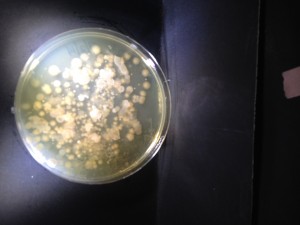| There are many advantages to blogging. One advantage is that it allows bloggers to express their feelings without fear of ridicule. I was able to write down my thoughts and expressions easily. I would like to perhaps incorporate blogging into my curriculum. My students currently complete a journal entry at the end of each class period. Next school year, I may have my students blog about their week in a google doc form. I believe blogging has enabled me to continue to reflect on my project and teaching. Reflection is extremely important in teaching. I hope to continue blogging for the rest of my career!D |
Category Archives: Uncategorized
Growth as a Blogger…..
Here is my first blog post, which was posted on May 5, 2014: ” I am so excited to be a part of the 2014-2015 Kenan Fellows Cohort. I am a math teacher with a degree in biology. I am looking forward to implementing the S.T.E.M. Design process within my curriculum.”
This post was almost a year ago and at that time, I never would have dreamed that I would be blogging. I am extremely introverted and a bit shy. Blogging has allowed me an opportunity to express and my feelings and interact with my fellow Kenan Cohort. I definitely feel that I have grown as a person and educator.
As I have stated in previous blog posts, my summer externship was one of the best experiences of my life. The interaction and collaboration with fellow scientists, staff at the museum, and other educators was invaluable. I know that it was a blessing that I was even chosen as a Kenan Fellow. I felt like a child in a toy store each day of my externship. My mentor were extremely patient with me as I learned many new laboratory techniques. I was really hesitant to work in a laboratory again because I always felt as if I would break something (I am very clumsy). However, my mentors were always comfort


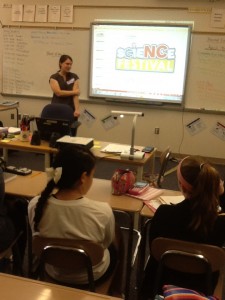 ing and helped me to realize that any mistake that I made, they had already made several times before.
ing and helped me to realize that any mistake that I made, they had already made several times before.
I feel as if I am a part of a large family, the Kenan Family. As a child, I sometimes felt as if I never belonged. I was raised in a single-parent household and had five other siblings. Although, I was a straight A student and received many honors throughout school, I always had the nagging feeling that I was never “good enough”. This feeling trickled into my adulthood. This Kenan Fellowship has empowered me as an educator. I am no more willing to try new ideas in my classroom. I not only implemented a science curriculum within a math class, but recently invited a Duke scientist to teach my classes. I also feel better equipped to teach and engage my students.
In the fall, I plan to attend an Ecology Conference in Baltimore Maryland. My mentor, Dr. Stevens, submitted a paper on the work we did last summer and this school year. Our work will be displayed at the conference in August. I am so excited and looking forward to additional opportunities that my Kenan Fellowship will poem up for me. I would like to thank the Kenan Fellows Program, NC State, The Friday Institute, The Science House, all of my mentors, The Museum of Natural Sciences, and everyone associated with my fellowship for making this one of the best years of my life.
Scaling My Microbiome Lessons
My final draft for my lessons was due on March 1, 2015. This was a stressful time. I still believe that my lessons need more refining. Our project began with students analyzing dandelion growth for a month. Students continued to write and reflect on my project while waiting for the data to be analyzed at the museum. Even though our data is back, we still are not quite finished with our lesson plans. I believe our plans will continue to change as time progresses. We are still trying to determine the best way to scale our project. Obtaining soil samples and planting dandelions should be able feasible for anyone who wants to replicate this portion of our experiment. Plating the soil may create some challenges. Hence, we have pictures of our soil samples from our Summer externship that could be used in lieu of plating. In addition, the data sets from our summer and student samples could be used in the statistical analysis of the soil samples. In math, students could use this data to make graphs, find measures of center and spread, and compare soil samples in the Piedmont and Coastal areas. This fits perfectly within the middle school math curriculum. I still believe that our lessons will continue to change as time goes on and are not finalized. For example, the program, www.phinch.org was used by my mentor to analyze our different data sets. We found out earlier this month that this is a relatively new program and is still in it’s infinite stages. I did have my students navigate and analyze our data on this website. They also provided feedback as well. I am truly grateful for being chosen as a Kenan Fellow and am thankful for the opportunities that have opened up as a result.
Lenova Technology and My Fellowship
I have used a great deal of technology in my classroom this school year. Yesterday, I meant with Laura, Dr. Stevens, and Dr. Urban, and Amy (via a google hangout) to analyze our data! Yes, we have our data from our summer work with our dandelions. Next week, we will have our student samples as well. My students are working with data and graphs in my Common Core 7 Plus classes. I also learned of a new website entitled, www.phinch.org. This site allows you to download excel or PDF files of your data and puts the data in several types of graphs (bar graphs, histograms, pie graphs, etc.). This is so awesome. My students will be using this website as well as doing statistical analysis on some of the data. They will also create questions as well.

Implementation of my curriculum
My students continue to complete blog prompts in Edmodo pertaining to my Soil Project. Last month, they had to answer the following prompt: Now that we have sent the dandelions to the Natural Science Museum, what do you expect to get back? What have you learned from this experiment? What do you expect once we receive the data? Please answer using at least three complete sentences.
This is a comment from one of my students: “Now that we have the data, I expect that we would get some type of analysis, on which soil was better, which plant grew the fastest, and how much the
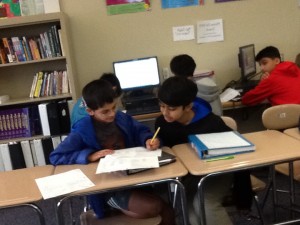 data varied from the different flowers. In this experiment, I have learned that precise measurements are key, and that the controls will never change. I had thought that since the control spot at MPMS was still a dandelion, it would have had to grow in some way. I expect that once we rece
data varied from the different flowers. In this experiment, I have learned that precise measurements are key, and that the controls will never change. I had thought that since the control spot at MPMS was still a dandelion, it would have had to grow in some way. I expect that once we rece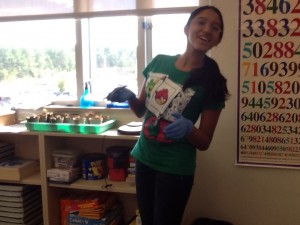
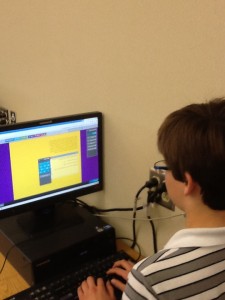
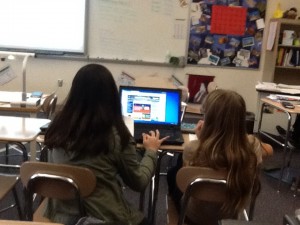 ive the data back, that we will continue to do different measurements. Or, once we have the data back we would have to organize all the data in all of the types of graphs: like histograms, box plots, stem and leaf, and etc.Furthermore, we could have to put the data in the three types of equations. (Slope-intercept, standard form, and point-slope.)”
ive the data back, that we will continue to do different measurements. Or, once we have the data back we would have to organize all the data in all of the types of graphs: like histograms, box plots, stem and leaf, and etc.Furthermore, we could have to put the data in the three types of equations. (Slope-intercept, standard form, and point-slope.)”
Another student wrote this:” I expect that the information we will get back from the Natural Science Museum would be why the dandelions in Amia’s front yard bushes grew so much more than the dandelions in the other soils. I learned that the variation in soils defiantly affected how much the plant grew. Once we get back data on why the soils affected the growth of the dandelions, we can use this information to use the best soil to grow our own plants in the future. By knowing what “ingredients” in the soil helps plants grow, we can use this information to grow taller and stronger plants in the future.”
Another student wrote the following: I expect that when we get back our results, we will notice some bacteria that grew on all different types of dandelion root, no matter what. I think it works kind of like humans. All humans have certain bacteria we NEED to survive, like digestive bacteria, and I believe that there is also a set of bacteria all dandelions need to survive. From this experiment, I learned a lot of things about dandelions. I also learned about how complicated real-life experiments can be.
Once we receive the data, I think that we will have a lot more math to be doing!! 🙂 Also, we will get to be a more active part of the experiment.. AS WE DO MATH!!!! 🙂
Another student wrote this: “I expect that we will get back the results from the tests that the scientists will do on the dandelions. Those results will show how much bacteria has grown on our dandelions. I have learned from this experiment that dandelions have bacteria on them even though we can’t see it. I also learned that the different types of soil and the environment that the dandelion is in, will affect how much bacteria will grow on it. I expect that we will have bacteria on at least one of our dandelions. I know that their is bacteria on at least one of them because based on the experiment that we did (that showed the bacteria on the dandelions), I know that bacteria can be able to grow on dandelions. This is why I expect that the dandelions that we are awaiting the results from, will show bacteria.”
This month, my students will be working on virtual labs for D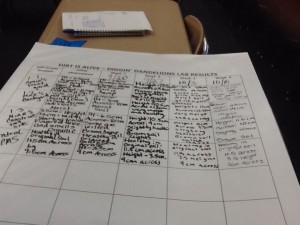 NA extraction, PCR, and gel electrophoresis. Laura, Amy, and I will be meeting with Julia later this month to go over our data. My next unit in my CC 7 Plus class deals with graphs. I am anxious to see what type of data we will receive. Here are some photos of my students in action!
NA extraction, PCR, and gel electrophoresis. Laura, Amy, and I will be meeting with Julia later this month to go over our data. My next unit in my CC 7 Plus class deals with graphs. I am anxious to see what type of data we will receive. Here are some photos of my students in action!
Kenan Fellow/Mentor Partnership
The Kenan Fellow/Mentor partnership is the foundation of our program and what we do. What does this parternship mean to you?
What does the Kenan Fellow Mentor partnership mean to me? I believe this partnership is the foundation or crucial aspect of the Kenan experience. I remember when I received the for an invitation to interview with the Kenan Fellow’s Program. I was chaperoning an 8th grade field trip to D.C. and I was so nervous. I immediately asked my former colleague, Sue Deperno, what to expect. She was a 2013-2014 Kenan Fellow and really encouraged me to look into the program. I also remember when I received the phone call stating that I was a 2014-2015 Kenan Fellow. It was early April, and I yelled and screamed so loudly, I believe my neighbors must have thought I lost my mind. I was so anxious and nervous and did not know what to expect. My degree is in Biology, but I teach math. Hence, I felt that I would not know how or even remember what to do in a laboratory setting. My mentors, Dr. Stevens and Dr. Urban were so supportive and awesome. The rest of my team, “Team Dirt” was equally anxious about starting in the lab. We did not want to mess up anything. Julia was so patient and understanding and treated us as capable individuals. She treated us as equals and showed us respect. This was such a good feeling, because it seems as if the teaching profession is respected by everyone. She was such a great teacher and put so much confidence in our team. By the end of week three, we were running DNA extractions, created gels, setting up PCR reactions, and creating solutions all on our own. This experience has been on of the best experiences in my life. I loved working at the museum and everyone was extremely supportive. My mentor visited my classroom once and I plan to set up a google hangout. Whenever I text or email her, she responds right away. I cannot thank the Kenan Fellow’s Program enough for choosing me to participate in such an awesome professional experience. This partnership has enabled me to grow as a professional and to become a more effective educator. Once you become a Kenan Fellow, your entire outlook changes.
Reflecting on the KFP Professional Development Institutes
This experience is by far the best experience of my professional life. I am surrounded by the top teachers from all across the state and their enthusiasm is infectious. I have grown as a professional and as a person. I have learned so many new and awesome things. For example, I know use Google Docs in my classroom. I set up four classrooms and will be using Google hangout soon. I also use www.remind.com to send text messages to students and parents. My students love www.kahoot.it.com. As I reflect on the KFP institutes, I am so thankful to have been chosen to be a part of this entire experience. The professional development provided at the KFP Institutes is by far the best that I have received in all my years of teaching. We received invaluable information and were encouraged to pursue other opportunities within education. My goal is to provide a similar type PD to my staff at school. I want educate them on what the Kenan Fellows program involves and encourage teachers to sign up for the Science Professional Development that will occur this summer at the museum. I also want to encourage other math teachers to become Kenan Fellows. I love incorporating science within my classroom and have had many students ask me for recommendations for Science Olympiad because of my project.
Social Media
Social media is so prevalent within our society today. Many people use Twitter, Instagram, Facebook, Timber, and many others to stay connected with friends and family. Some school districts ban or restrict social media for many reasons. Some students use these social sites to bully other students. This is a huge problem in many schools and is a little out of control. Most sites have an age limit in order to use them or require parental permission. Students find ways around these safeguards. Other districts may allow or encourage the use of social media within the school setting. One reason would be that it is a way to encourage collaboration and social interaction. Some teachers allow their students to blog on twitter on an assignment given in class. Edmodo is a teacher-monitored site which is very similar to Facebook. Teachers can post assignment, quizzes, homework, and information on Edmodo. Students can communicate with their teacher and others. I am using Edmodo with my students and the other teachers involved in my fellowship. My students are collaborating with sixth graders at Mills Park and seventh graders at Burgaw Middle School via Edmodo. Google also has many applications that allow teachers to incorporate technology within their classroom. Students can collaborate with others using a Google Document and teachers can monitor this interaction. The bottom line is this: if social media is used within the classroom or at home, it should be monitored closely by parents and teachers. Teachers also need to be careful about using such sites as well.
The start of a new year
I went back to work at a brand new school last Friday! I am so excited to be working at Mills Park Middle School. In addition, I have had the opportunity to inform many individuals about my Kenan Fellowship. I am excited to watch our dandelions grow and analyze the data throughout the school year. I have used Google Docs a great deal since NCCAT. I have learned how to create and share documents. I even created classes using Google Classroom. I will also be using www.remind.com to send out email and text reminders to my students and parents. The beginning of the school year is such a hectic time. Yesterday, was an open house at my school. Students and their parents reported to their child’s homeroom teacher to receive supply lists and briefly meet teachers. I have 120 students and probably met about 75% of those students and their parents yesterday. I am looking forward to a great school year!
Describe what you have learned from your fellowship that will change your teaching…..
My fellowship ignited my passion for science again. I truly would like to teach science after working in the lab for three weeks. I enjoyed running DNA extractions, PCR, and gel electrophoresis on soil samples. I believe science and math are so interconnected and there are numerous ways that I can incorporate science within my curriculum. I think one of the most important things that I gleaned from my fellowship is the importance of collaboration. I loved collaborating and working with Amy, Laura, and my mentors at the museum. We wrote our lesson plans together and worked on the soil project together. I am determined to incorporate collaborative work within my curriculum this school year. I think I would have been a little intimidated if I had to go through this process alone.
